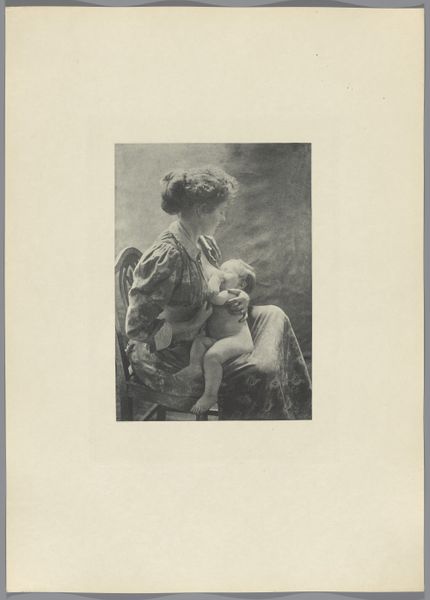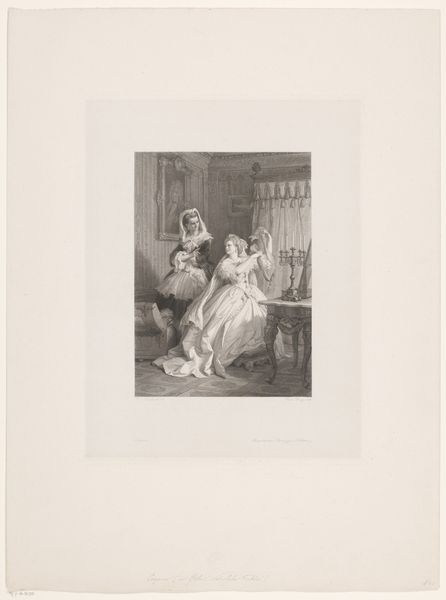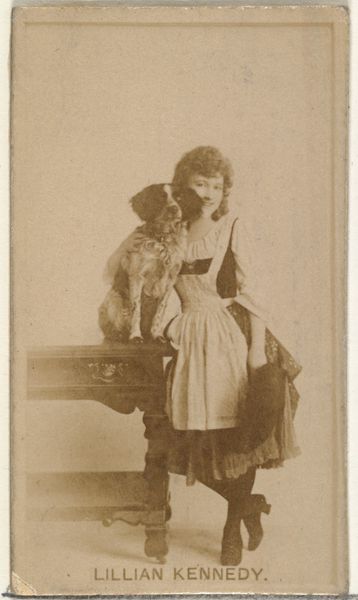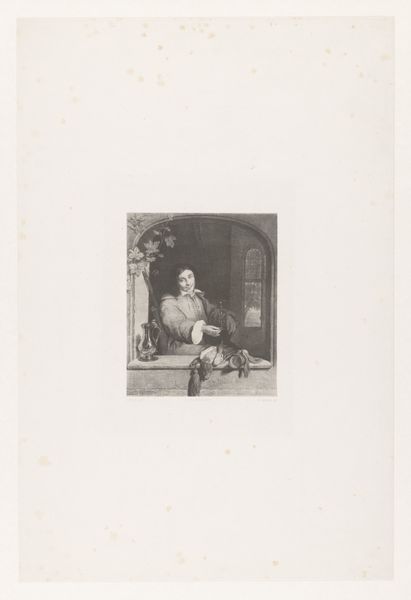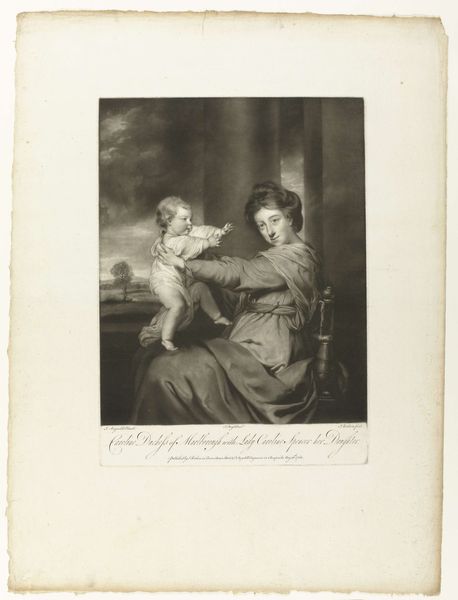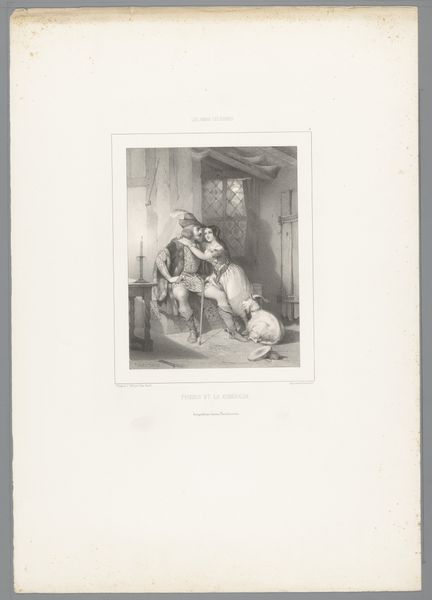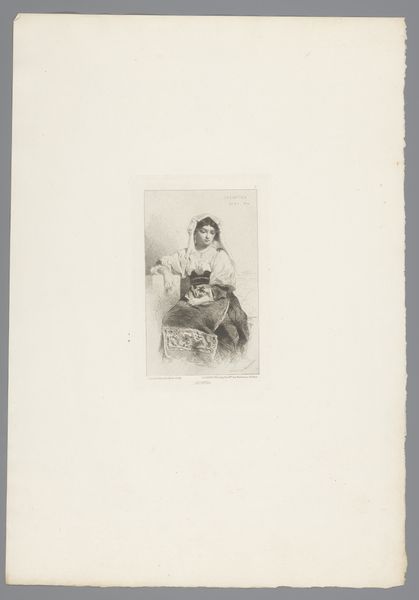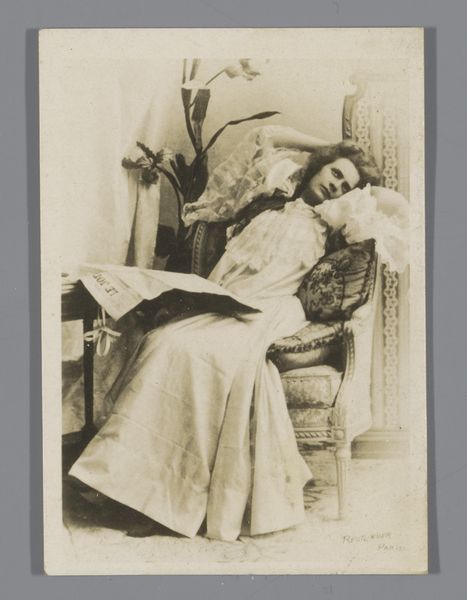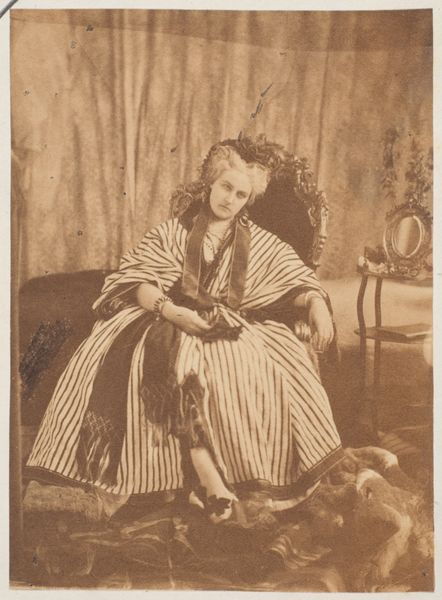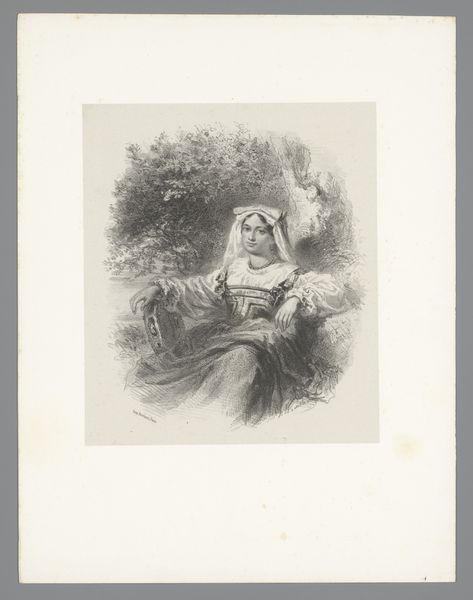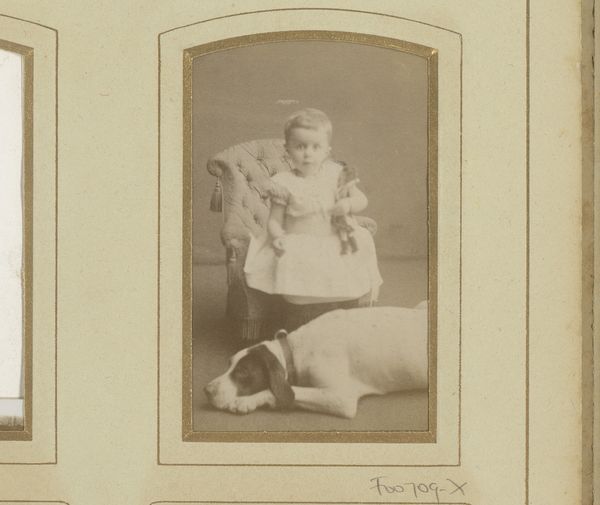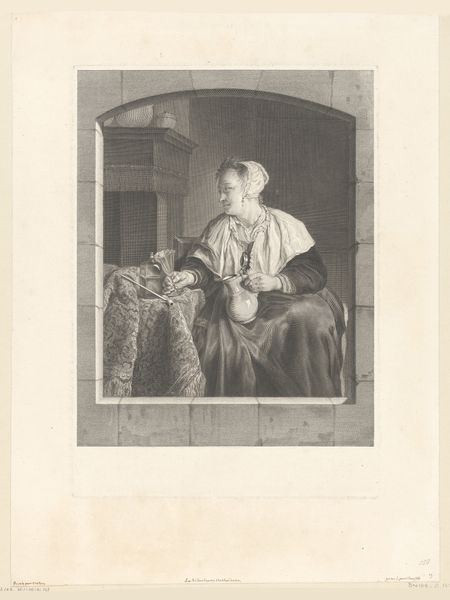
drawing, print
#
portrait
#
print photography
#
drawing
#
animal
# print
#
dog
#
genre-painting
Dimensions: height 734 mm, width 568 mm
Copyright: Rijks Museum: Open Domain
George H. Every made this artwork, *Meisje met haar twee honden*, a monochrome print, in the late 19th Century. It depicts a young girl with two dogs; a smaller pug on her lap and a larger, long haired dog sat next to her. The artwork is rich with visual codes and cultural references that tell us much about the values of the society in which it was produced. In Europe at this time, the family and the home were celebrated as places of safety and security. The family dog had become a common symbol of domesticity. This scene speaks of wealth and belonging, with its interior setting, and the girl’s clothing marking her out as from a privileged background. The prominence of the dogs reflects the Victorian obsession with animals as pets. To fully appreciate the image, we need to consider not only its aesthetic qualities, but also the social and institutional contexts in which it was made and consumed. Accessing historical resources will help us to better understand the role of the image within the wider culture.
Comments
No comments
Be the first to comment and join the conversation on the ultimate creative platform.
